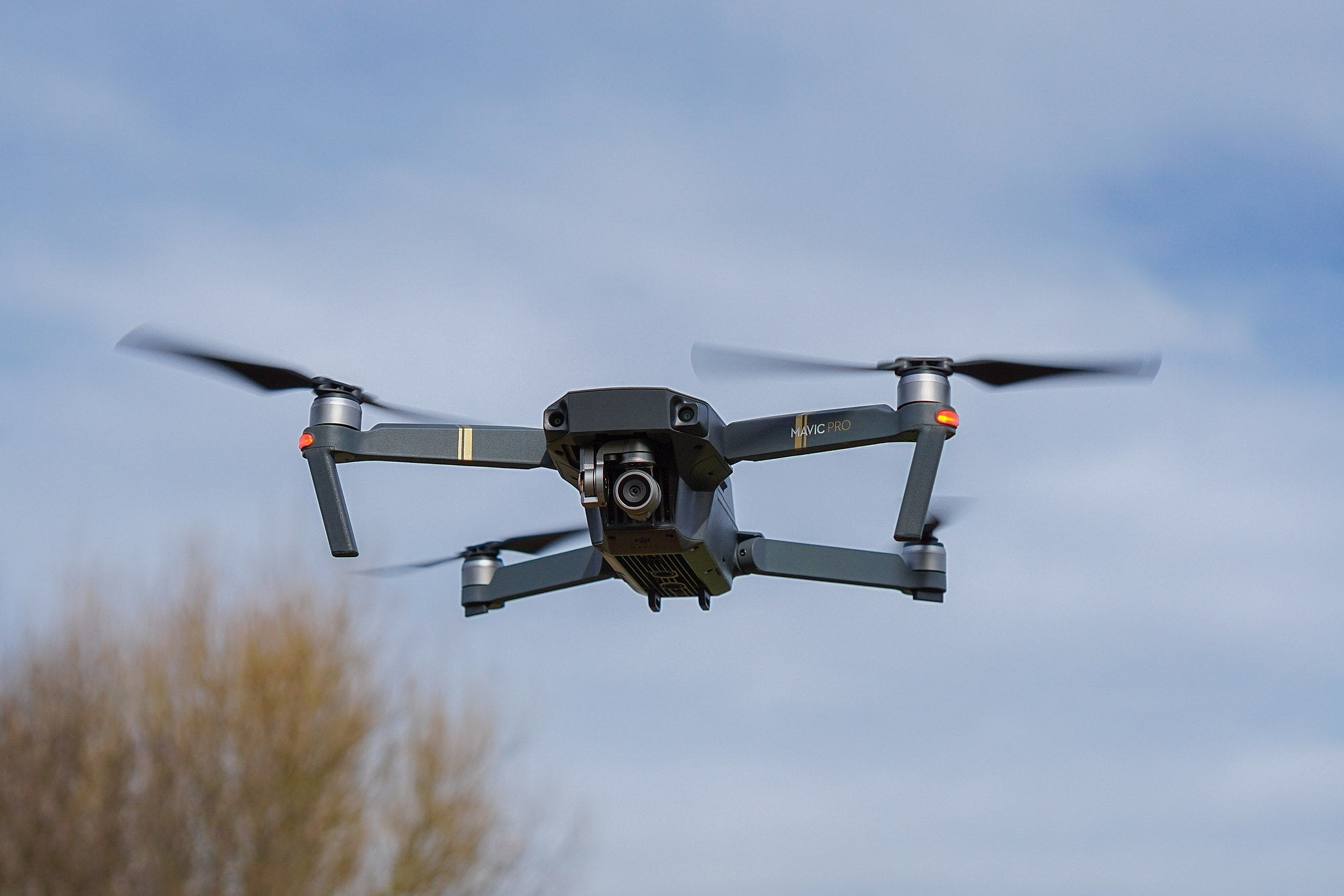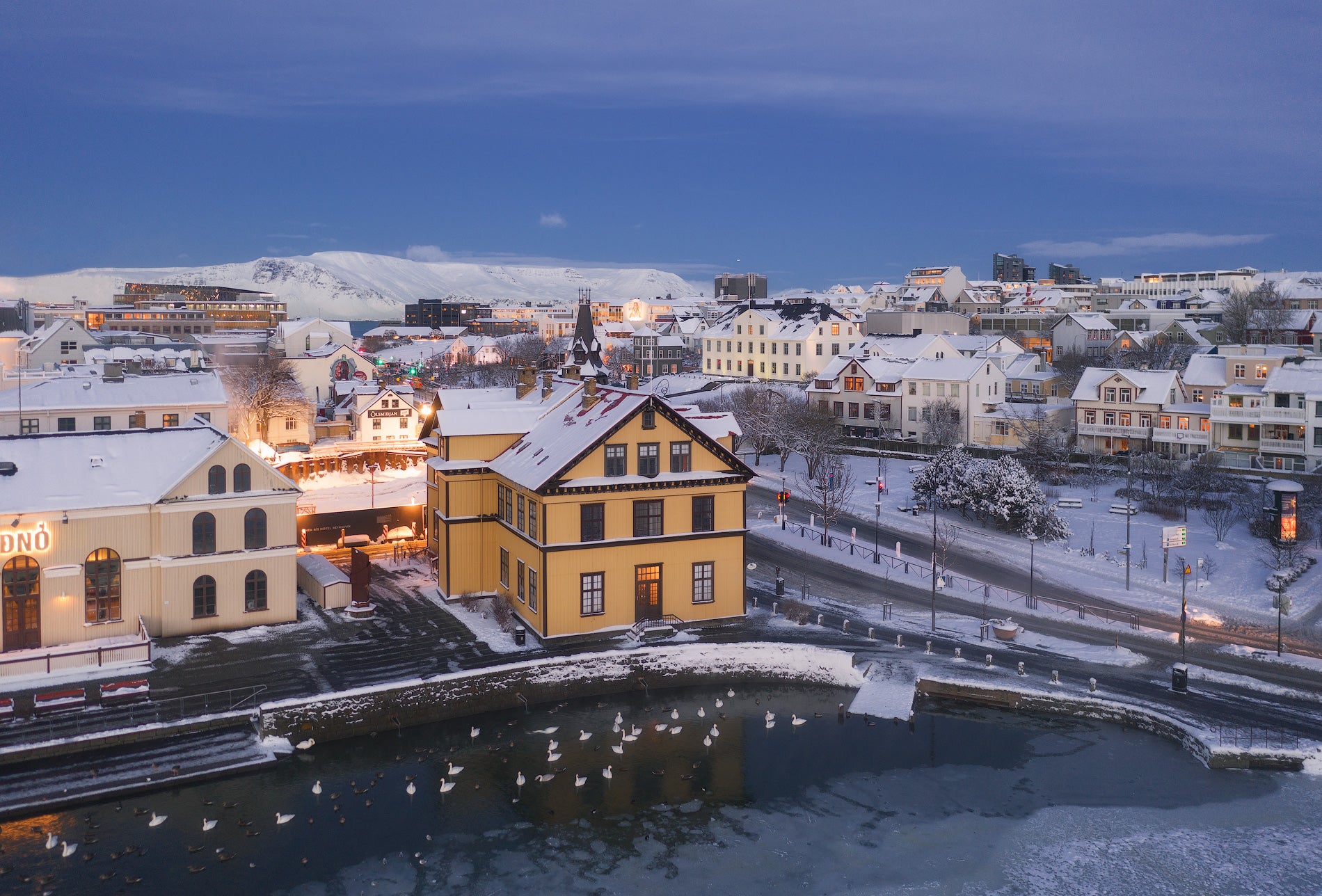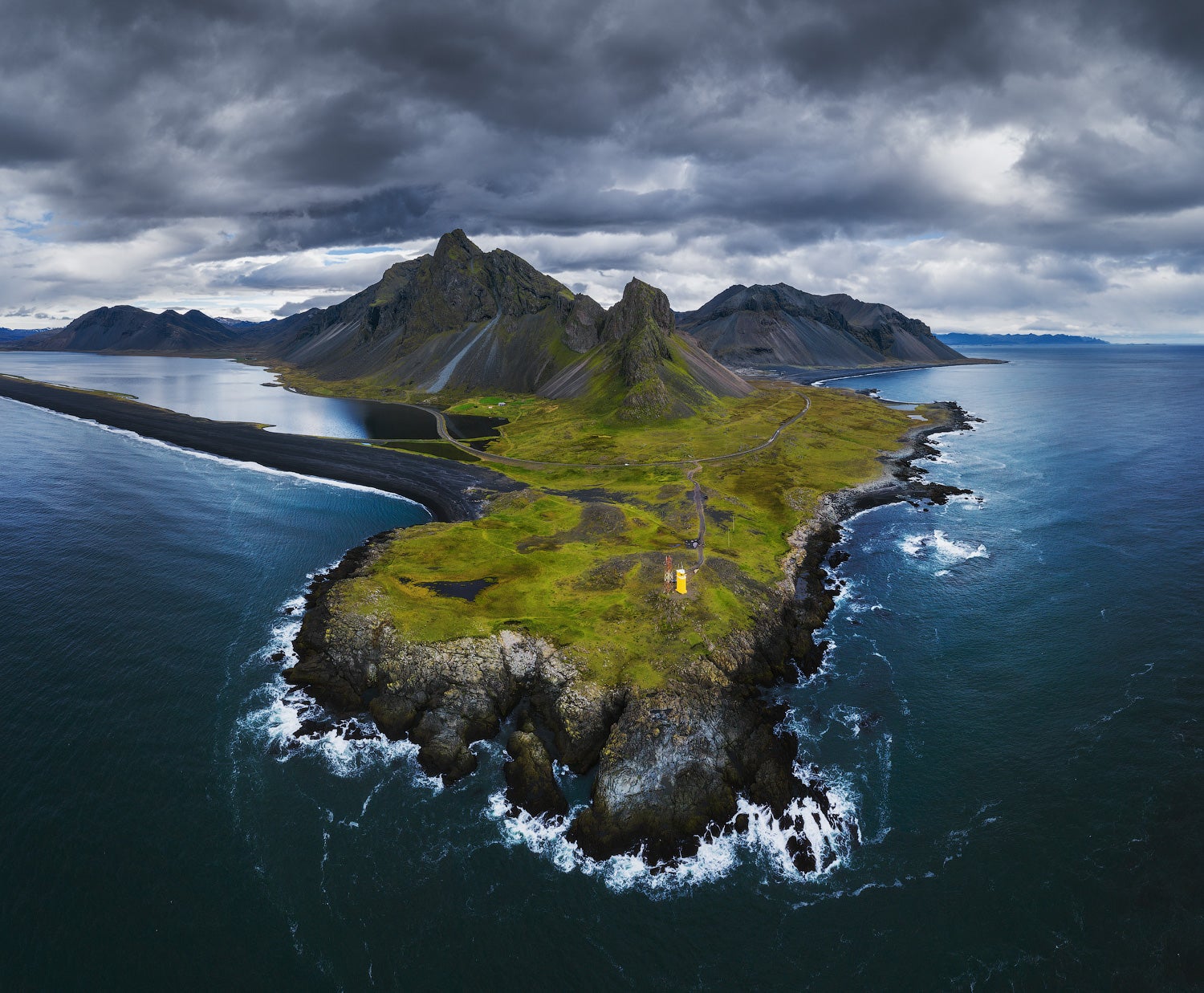
There’s no doubt that Iceland is one of the best destinations in the world for aerial photography. The variety of scenery here is enough to put together a portfolio packed with colour, contrast and nature at its best. But flying a drone in Iceland comes with unique challenges too. There are more tourists at each scenic location than ever before and regulations on where you can and can’t fly are still evolving. This is not to mention the weather, which can be unpredictable... to say the least.
- Check out these Camera and Gear Reviews
- See The Best Camera Gear Recommendations for Photography in Iceland
Using a drone for aerial photography in Iceland is especially tough for those who don’t have much experience behind the controls. We’ve all seen breathtaking drone pictures and videos from the Land of Fire and Ice, but what you don’t see is the work that goes into putting them together.
It doesn’t come easy. You can bet that each pilot had many, many hours of practice before capturing such epic footage. No doubt, it’s a big jump to flying from using a static camera.
So here are some of the biggest rookie mistakes to avoid when flying your drone in Iceland.
- See also: The Ultimate Guide to Drone Vacations
Flying in Forbidden Zones
 Ásbyrgi Canyon. Photo by: 'Iurie Belegurschi'.
Ásbyrgi Canyon. Photo by: 'Iurie Belegurschi'.
In the past few years, Icelandic authorities have put into place rules regarding drone flights. As you’ll know, most photography drones are noisy and are capable of doing a lot of damage should they collide with a person or object.
Because of these reasons, there are concerns over the safety of tourists and wildlife, as well as a fear that too many drones in the sky will shatter the silence that makes many of Iceland’s destinations so magical.
So there are rules about where and when you can fly a drone. These are put together by the Icelandic Transport Authority. One of those rules states that pilots can’t fly their drones over groups of people.
Unfortunately, that rules out most of the major tourist sites, where you’ll find no-drone signs and, naturally, plenty of people. Note that you can apply for an exemption online, making this the one avenue should shooting in a certain location be a necessity for your project.
The governing bodies that manage Iceland’s national parks and other environmentally sensitive locations—such as Gullfoss, Vatnajökull and Þingvellir—have also put in place bans on drone flights. For those, you’ll have to apply for an exemption from the Icelandic Environment Agency, or the appropriate national park directly.
In general, flying a drone according to the rules in Iceland is about adhering to the broad Transport Authority regulations and, when necessary, receiving permission to fly above sensitive locations.
Flying where you shouldn’t could lead to a confiscation of your equipment and an expensive fine, not to mention damage to the reputation of your fellow drone pilots.
Flying without calibrating your gimbal
 Glacial Rivers in the Highlands. Photo by: 'Iurie Belegurschi'.
Glacial Rivers in the Highlands. Photo by: 'Iurie Belegurschi'.
This mistake is a perfect example of something that’s pretty much exclusive to drone photography. The gimbal is the platform that the camera sits on in order to absorb the vibrations while you fly, keeping your shots and footage stable.
An easy mistake to make is to immediately take off and spend hours recording without calibrating your gimbal to ensure that everything is properly aligned. Depending on the drone you’re using, the calibration process is a 30-second or so sequence that lines up the gimbal with the horizon.
So what happens if you forget to do this, or if your calibration is off-kilter? Well, your photos and footage will come out skewed, just like you’re looking at the world with your head tilted.
In a country like Iceland, this problem is exacerbated. That’s because many of your drone shots will feature vast, sweeping landscapes. Therefore, if your gimbal is off by a few degrees, it’s going to be super jarring.
The annoying part is that as most pilots fly using a video feed through their smartphone, it’s tough to see any issues before it’s too late. It’s only in post production that you sit down and realise that all your video is slanted.
Sure, you can edit this out in post production, but why spend all that time tilting your footage when you can calibrate with a touch of a button before take off?
Annoying people with your drone
 Braided River System. Photo by: 'Iurie Belegurschi'.
Braided River System. Photo by: 'Iurie Belegurschi'.
As we mentioned above, drones are noisy. Some people might find them annoying. If you’re busy admiring the serenity of Jökulsárlón glacier lagoon or taking in the views at Svínafellsjökull ice cap, the whine of a drone is going to interfere with your experience.
The irony is that in the one place that the buzz of drones can’t be heard, they’re annoying in another way. Iceland’s loudest locations are probably its waterfalls. The roar of Skógafoss is enough to drown out a whole swarm of drones, for example. But at these locations a drone buzzing around is going to get in the way of a whole bunch of photographers’ shots. Like the ultimate photobomb.
The bottom line is this: be respectful of your fellow travellers and photographers. Ask if they mind you flying for a few minutes, be open about what you’re doing and don’t overstay your welcome.
You could also think about visiting popular sites at times when they won’t be so busy.
As well as all of that, just remember: The more people that get frustrated with drone pilots and who hence make complaints about them, the more likely that new rules will be enforced to further restrict their use. That would be a shame for us all.
Getting caught out by the weather
 World from Above. Photo by: 'Iurie Belegurschi'.
World from Above. Photo by: 'Iurie Belegurschi'.
It doesn’t matter if you’re flying a drone or not. When planning a trip to Iceland, you need to be ready for whatever weather this country is going to throw at you.
For aerial photographers, the weather conditions are even more important. Rain and snow will ground 99% of drones. Flying when it’s wet is not worth the risk. Your best bet is to check the forecast ahead of time and plan your flight windows to make the most of your trip.
Iceland’s weather is famously changeable, so you need to be ready to react quickly if conditions take a turn for the worse. That means having a return to home point set close by in case the rain starts falling, or even being ready to turn on sport mode and to land as quickly as possible.
The idea of being flexible and fast to react to changing conditions also counts for when the weather improves. If you see a break in the clouds and the sun seems like it’s ready to come out, then don’t waste any time in taking off. You’ll never know how long the good weather is going to last, so make the most of it!
There’s one final way that Iceland’s weather can catch out drone pilots: The wind here is fierce. That’s a challenge for two reasons. First of all, capturing smooth, cinematic shots is a lot tougher when your drone is getting pushed in one direction and fighting against the wind.
Second, most advanced drones have built-in technology that helps them to hover in place when you let go of the controls. But in windy conditions, your drone will have to work even harder to remain stable in the air and hold its position.
This means that Iceland tends to drain a drone’s batteries more than your average photography destination. So don’t be surprised if your flight time is a few minutes short of what you were expecting, particularly if it’s cold as well as windy.
- See also: How to Take Great Photos in Bad Weather
Not having spare batteries and storage space
 Sunset over Dyrholaey. Photo by: 'Iurie Belegurschi'.
Sunset over Dyrholaey. Photo by: 'Iurie Belegurschi'.
Speaking of flight time, the final mistake that you can’t afford to make when flying your drone in Iceland is to not take enough spare batteries and storage space with you.
Spare batteries are vital to maximise your time in the air and to help you capture as many winning shots as possible. That’s obvious, whether you’re shooting with a regular DSLR or a drone.
But the unique thing about Iceland is the distance between locations and the remote nature of some of them. Once you set out for the day, you might not come across another spot where you’ll be able to recharge your gear and to get all of those batteries back to 100%.
For that reason, portable chargers are highly recommended. You don’t want to leave knowing that you missed out the shot of a lifetime just because you ran out of juice.
All drones are limited in terms of storage space, so having something you can easily transfer files to is a must. This is especially important when you’re shooting 4K video, which takes up a huge amount of memory and can quickly fill up SD cards.
Consider shooting in a lower resolution or, if you don’t want to sacrifice on video quality, and be sure to take along an external hard drive to keep storage space free.
Those are just a few of the biggest mistakes you can make when shooting aerial photography in Iceland. Avoid them if you can to help guarantee a successful trip!
About the author: Malek Murison is a tech journalist based in London. You can find more of his work on his website or by following him on Twitter.
Did you know that our Iceland Photo Tours are drone friendly? See Iceland from a different perspective. Our Extreme Iceland Highlands Photography Workshop is the perfect way to capture Iceland from the sky!











